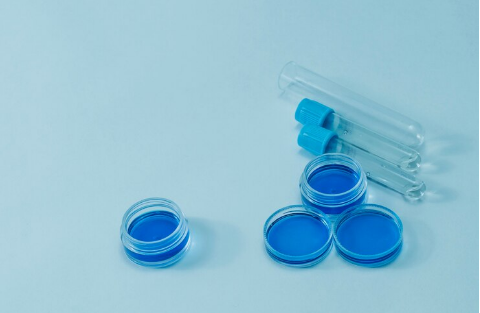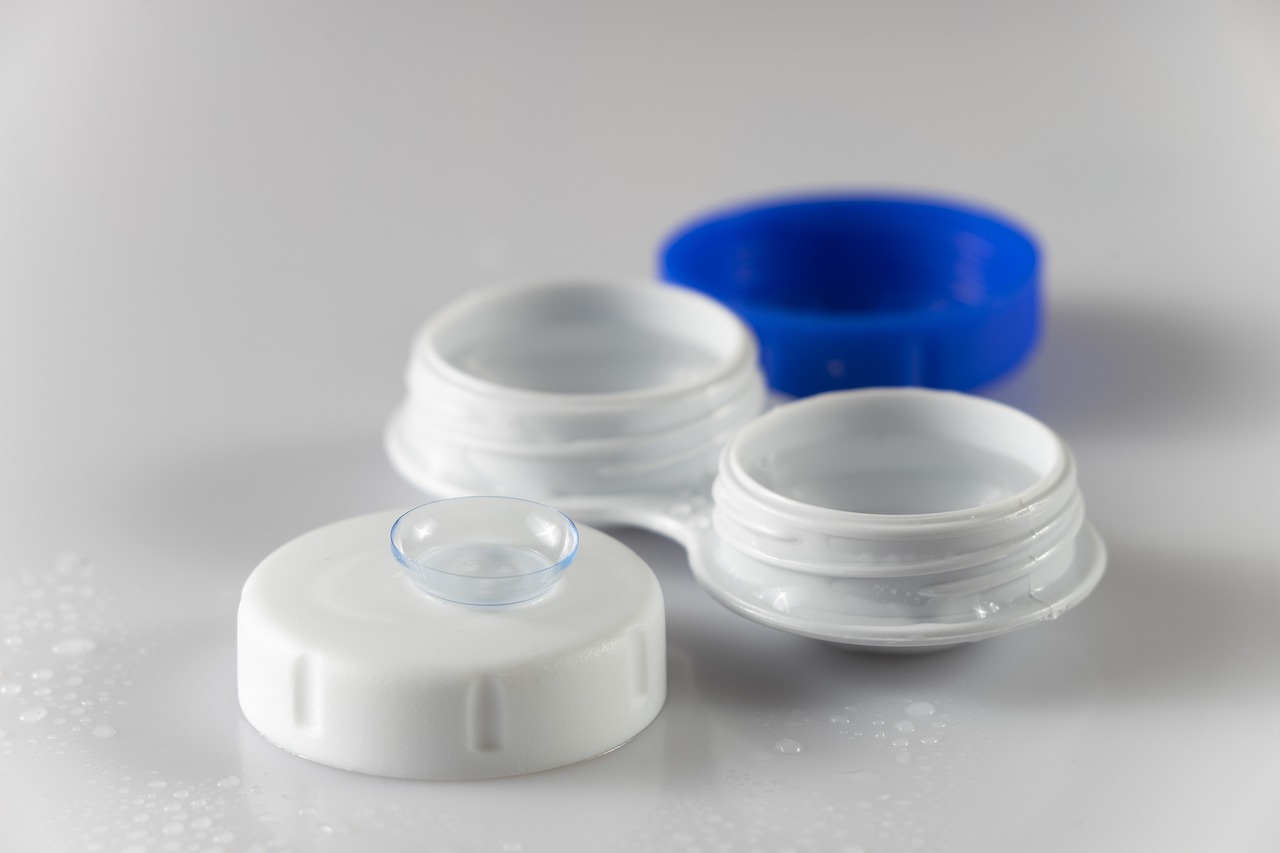Red Eye And Contact Lens: What Should I Do If Eye Turn Red Wearing Contact lenses?

If your eyes turn red while wearing contact lenses, take it as a warning. Although contact lenses are small, they rest directly on your eye, and red eyes could indicate a problem. While it might be a sign that you need to give your eyes a break, several conditions could also be the cause. Continue reading to discover the top eight reasons why your contact lenses might be causing your eyes to become red.
Table of Contents
Effect of Contact Lenses on the Eyes
Contact lenses can significantly enhance vision and comfort without harming eye health when used correctly. However, misuse or extended wear of contact lenses increases the risk of complications. When lenses limit oxygen and tear flow to the eyes, it can lead to dryness and inflammation. Proper usage is key to maintaining eye health.
Contact Lens Overwear and Misuse
Contact lenses are designed with specific guidelines for daily wear, including how long they can be worn each day and whether they are safe for overnight use. Most lenses are meant to be worn for 12 to 14 hours a day and should not be slept in. The type of lens—monthly, bi-weekly, or daily—determines the appropriate replacement schedule.
CLARE(Contact Lens-Acute Red Eye)
Contact Lens-Induced Acute Red Eye (CLARE) is a condition caused by a reaction to toxins produced by bacteria in the eye. Normally, blinking helps flush out these toxins, but they can accumulate on contact lenses, leading to irritation and redness.
CLARE is more common in individuals who nap or sleep while wearing their contact lenses, as this behavior increases the likelihood of toxin buildup, resulting in an inflamed and red eye.
Signs and Symptoms of CLARE
When contact lenses begin to negatively impact eye health, symptoms of Contact Lens-Associated Red Eye (CLARE) may appear. Common signs include redness in the white of the eye or on the eyelids, eye irritation, blurred vision, and light sensitivity. Additionally, poor lens fit and damage to the front of the eye may indicate CLARE.
Treating CLARE
Treatment for CLARE varies based on symptoms and severity. Not wearing contact lenses until CLARE resolves may be the only treatment needed. For redness and irritation, steroid eye drops may be prescribed.
If there's a bacterial component, antibiotic drops are needed. In many cases, a combination eye drop with both steroid and antibiotic properties is most effective. Regardless of the treatment, discontinuing contact lens use is essential to allow the eyes to heal.
It's needed to discontinue contact lens use and seek professional medical advice to prevent potential damage to your eyes. Your eye doctor can determine the cause and provide the appropriate treatment or adjustments needed.
Dry Eye Syndrome
Even without noticeable symptoms of dry eye syndrome, wearing contact lenses can lead to very dry eyes, especially if your tear layer isn't adequately healthy.
Contact lenses can absorb your natural tears, preventing proper lubrication for your eyes and the lenses. As the day progresses, you might experience increasing dryness, redness, and a scratchy sensation, limiting your ability to wear lenses for extended periods.
In severe cases, switching to glasses might be necessary. Treatment options include using artificial tears, staying hydrated, using a humidifier, reducing screen time, and avoiding irritants like smoke and air conditioning.
Defective Lenses
It's essential to visit your eye doctor for a follow-up after receiving new contact lenses. This ensures that the lenses are not defective, that your prescription is correct, and that the lenses fit properly.
Lenses that are too tight can restrict tear flow and reduce oxygen to the corneas, potentially leading to redness and discomfort as the day progresses. On the other hand, lenses that are too loose can cause similar issues, moving with each blink and feeling like a foreign object in your eye. Also read How to Rehydrate And Clean Contacts without a solution?
If you experience any discomfort, remove the lenses immediately and consult your doctor for a new prescription or refitting. Never wear defective or torn lenses, as they can scratch your cornea, creating openings for bacteria that may lead to infections.
Corneal Ulcer
Corneal ulcers are open sores on the eye's surface, usually caused by infections from bacteria, viruses, fungi, or parasites. The first sign is often redness in the eye, followed by a sensation of something being in your eye, increased sensitivity to light, tearing, and pain.
Corneal ulcers are a serious concern in eye care as they can quickly lead to complications, including scarring, vision loss, or even blindness if untreated. Causes include improper use or overuse of contact lenses.
Treatment depends on the underlying cause and may involve corticosteroid eye drops to reduce inflammation, antimicrobial eye drops, or pain relief medication. If you notice these symptoms, seek medical attention immediately.
Keratitis
Keratitis is an inflammation or irritation of the cornea, often caused by improper contact lens use, such as wearing them for too long, failing to clean them correctly, or using them while swimming. If not treated, keratitis can lead to serious complications like corneal scarring, corneal ulcers, vision loss, or even blindness.
Treatment depends on whether the keratitis is infectious or non-infectious. Infectious keratitis is typically treated with antibiotic, antiviral, or antifungal eye drops, and sometimes oral medications. Non-infectious keratitis may be managed with artificial tears, anti-inflammatory eye medication, and an eye patch to protect the eye.
Seasonal Allergies
Allergies can make wearing contact lenses uncomfortable due to the constant itching, eye rubbing, and tearing they cause. Contact lenses can worsen allergy symptoms by collecting pollen and other airborne particles, which stick to the lenses. To manage this, allergy medications may help alleviate symptoms, and switching to daily disposable contact lenses can prevent the buildup of allergens on the lenses.
Contact Lens Solution
Improper use of contact lens solution, such as reusing old solution, can lead to eye irritation by reintroducing bacteria and particles into your eyes. Red eyes might also indicate an allergy to your contact lens solution, even if you've used the same brand for years.
Treatment involves the proper use of contact lens solutions and for allergic reactions to the lens solution treatment may include:
- Importance of Fresh Contact Lens Solution
Using fresh contact lens solution daily is essential to ensure your lenses are properly disinfected. Reusing old solution from the previous night can reintroduce bacteria, debris, and harmful particles back into your eyes, leading to irritation, redness, and an increased risk of infection.
- Allergic Reactions to Contact Lens Solutions
Even if you've been using the same brand of contact lens solution for years, an allergy can still develop. Symptoms of an allergic reaction include redness, itching, and discomfort. To address this issue, consider switching to solutions labeled "Sensitive Eyes" or "Thimerosal-Free," which are designed to be gentler on the eyes.
- Removing Preservatives from Lenses
Preservatives in contact lens solutions can cause irritation, particularly for those with sensitive eyes. It's important to ensure that preservatives are properly removed from your lenses. If irritation persists, you may need to buy a new pair of contact lenses, as older lenses can accumulate deposits that worsen discomfort.
- Considering Daily Disposable Contact Lenses
For ongoing issues, daily disposable contact lenses may be a better option. These lenses are discarded after a single use, reducing the buildup of allergens, bacteria, and other irritants on the lens surface. This option is especially beneficial for those with sensitive eyes or allergies.
- Choosing the Right Re-Wetting or Lubricating Drops
Be cautious when selecting contact lens re-wetting or lubricating eye drops. Some drops contain preservatives that can trigger allergic reactions. Consult with your eye doctor to choose products that are compatible with your lenses and meet your specific eye health needs.
Regularly consulting with your eye doctor is also important to address any issues promptly and effectively.
Giant Papillary Conjunctivitis
Giant papillary conjunctivitis (GPC) is a condition commonly seen in contact lens wearers. It occurs when the contact lenses irritate the conjunctiva, the transparent tissue covering the white part of the eye. This irritation can result from improper lens care, overwearing lenses, or the presence of a foreign body in the eye. If left untreated, GPC can lead to damage to the eyelid or cornea.
Symptoms of GPC:
- Redness and itchiness in the eyes
- Contact lenses shifting on the eye surface
Treatment Options:
- Temporarily stop wearing contact lenses to allow the eye to heal.
- Reduce daily wear time of contact lenses.
- Use prescribed eye drops or ointments to alleviate itching and swelling.
- Consider switching to a different type of contact lens.
- Use only unpreserved saline solutions for lens care.
- Avoid sleeping with contact lenses on.
Proper treatment and care can help manage GPC effectively and prevent further complications.
How to Treat Red Eyes From Contacts
There are various methods to alleviate eye redness and irritation:
- Remove contact lenses for a few days to give your eyes a break.
- Use over-the-counter artificial tears to soothe and hydrate your eyes.
- Apply OTC antihistamine eye drops if seasonal allergies are contributing to the irritation.
- Place a cool compress or washcloth over your closed eyes a couple of times a day for relief.
- Avoid exposure to triggers or irritants like smoke, fumes, pollen, dust, chlorine, or pet dander.
If the redness is due to minor irritation, it should resolve within a day or two. However, more serious infections may cause prolonged redness and irritation lasting one to two weeks.



